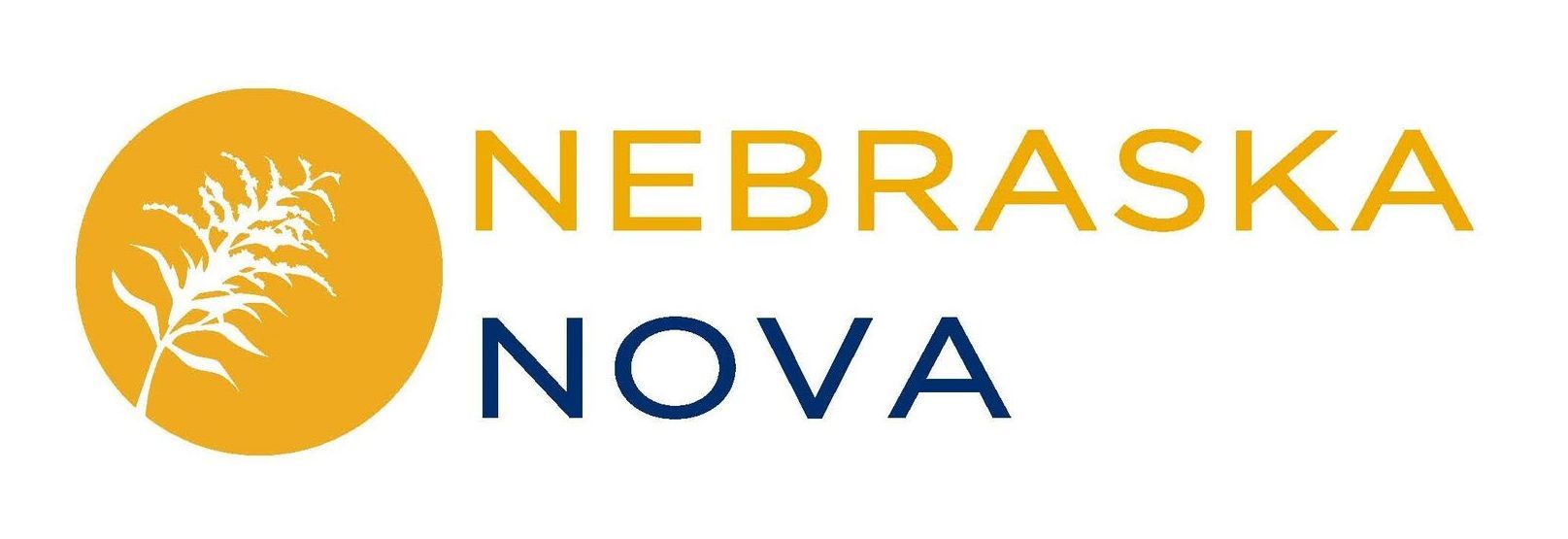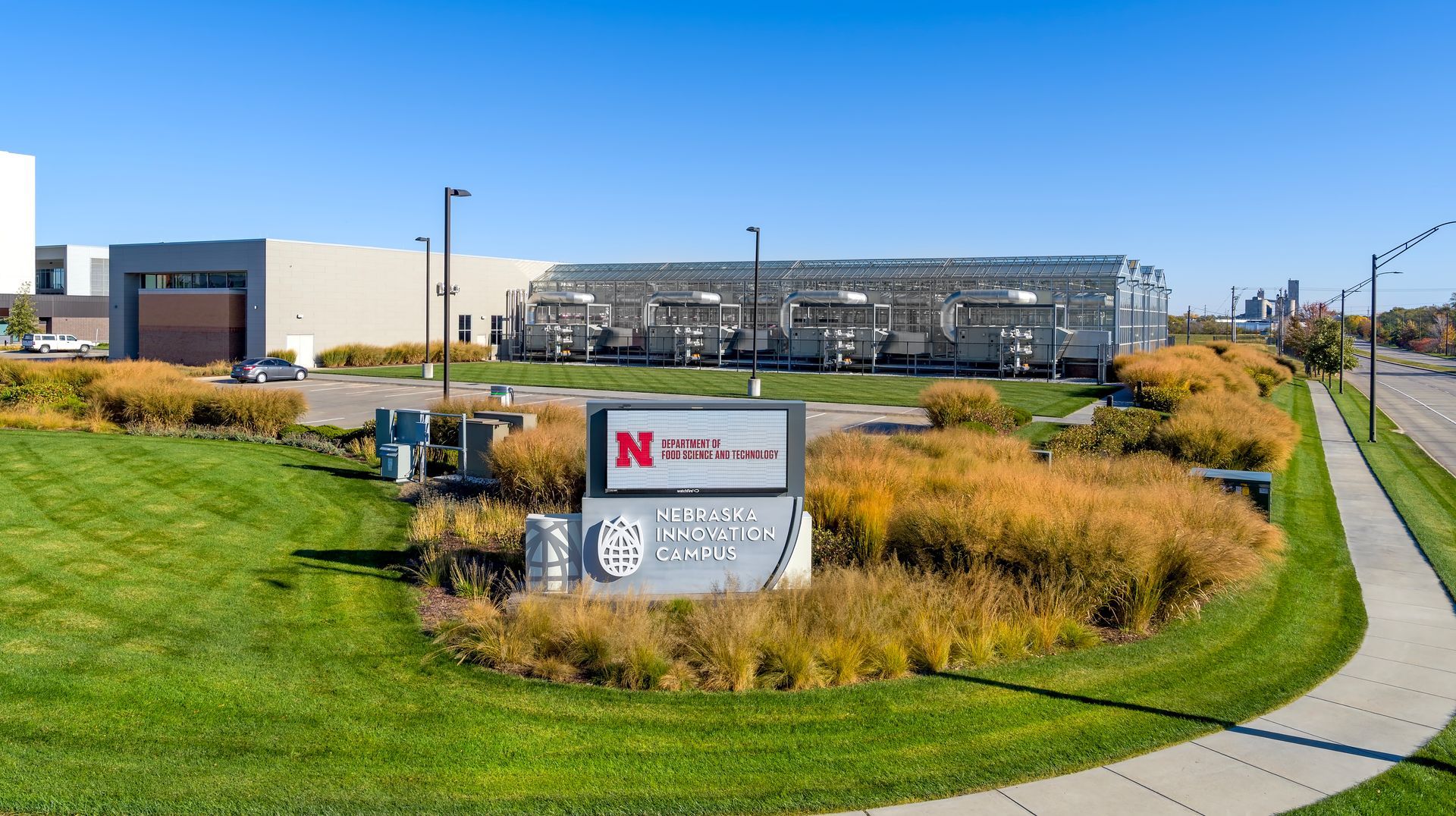Why NIC
Why NIC
Nebraska Innovation Campus (NIC) is an investment in the future of Nebraska. The campus was originated in 2010 after the State and University made the decision to relocate the Nebraska State Fair which provided the land for campus and a state investment project. NIC has significant potential to attract new businesses, create jobs, undertake research that leads to innovation and commercialization, and increase the state’s competitiveness.
Nebraska Innovation Campus brings the university into competition with the top tier of research universities by providing more high-tech employment opportunities for UNL graduates in the state and aligning the core research strengths of its faculty with the practical and technical expertise of private sector tenants, particularly in the areas of food, fuel, and water.
The campus was designed to facilitate new and in-depth partnerships between the University of Nebraska and private sector businesses and connect the talents of experts, companies and the University to create a unique culture of innovation. NIC is adjacent to the University of Nebraska-Lincoln and strategically provides access to research faculty, facilities and students. There will be 2.2-million square-feet at full build out with uniquely designed buildings and amenities that inspire creative activity and engagement, transforming ideas into global innovation. NIC aspires to be the most sustainable research and technology campus in the United States.
Nebraska Innovation Campus (NIC) is an investment in the future of Nebraska. The campus was originated in 2010 after the State and University made the decision to relocate the Nebraska State Fair which provided the land for campus and a state investment project. NIC has significant potential to attract new businesses, create jobs, undertake research that leads to innovation and commercialization, and increase the state’s competitiveness.
Nebraska Innovation Campus brings the university into competition with the top tier of research universities by providing more high-tech employment opportunities for UNL graduates in the state and aligning the core research strengths of its faculty with the practical and technical expertise of private sector tenants, particularly in the areas of food, fuel, and water.
The campus was designed to facilitate new and in-depth partnerships between the University of Nebraska and private sector businesses and connect the talents of experts, companies and the University to create a unique culture of innovation. NIC is adjacent to the University of Nebraska-Lincoln and strategically provides access to research faculty, facilities and students. There will be 2.2-million square-feet at full build out with uniquely designed buildings and amenities that inspire creative activity and engagement, transforming ideas into global innovation. NIC aspires to be the most sustainable research and technology campus in the United States.
One Campus, Unique Spaces
Office, Wet/Dry Lab, Pilot Plant, High Bay, and Greenhouse
55+
Diverse private and public sector partners
2.2 Million
Square feet of state-of-the-art facilities at full buildout
500,000 SF Constructed
132 Developable acres, 66 of which are shovel-ready
23,918 Participants
At events held during 125 days at the conference facilities
One Campus, Unique Spaces
Office, Wet/Dry Lab, Pilot Plant, High Bay, and Greenhouse
55+
Diverse private and public sector partners
2.2 Million
Square feet of state-of-the-art facilities at full buildout
500,000 SF Constructed
132 Developable acres, 66 of which are shovel-ready
23,918 Participants
At events held during 125 days at the conference facilities
One Campus, Unique Spaces
Office, Wet/Dry Lab, Pilot Plant, High Bay, and Greenhouse
55+
Diverse private and public sector partners
2.2 Million
Square feet of state-of-the-art facilities at full buildout
500,000 SF Constructed
132 Developable acres, 66 of which are shovel-ready
23,918 Participants
At events held during 125 days at the conference facilities
128
Student internships funded
$371.8 Million
Economic impact from the operation and investments of business, organizations, and conferences
$7.23 Million
Annual state and local income, sales, and property tax revenue impact
$91.6 Million
Annual employee compensation impact
$10.31 Million
In expenditures supported by industry sponsorships
128
Student internships funded
$371.8 Million
Economic impact from the operation and investments of business, organizations, and conferences
$7.23 Million
Annual state and local income, sales, and property tax revenue impact
$91.6 Million
Annual employee compensation impact
$10.31 Million
In expenditures supported by industry sponsorships
128
Student internships funded
$371.8 Million
Economic impact from the operation and investments of business, organizations, and conferences
$7.23 Million
Annual state and local income, sales, and property tax revenue impact
$91.6 Million
Annual employee compensation impact
$10.31 Million
In expenditures supported by industry sponsorships
Statewide Employment
Impact of 1,657 Jobs
$293.2 Million
In total cumulative economic impact from investments related to NIC
$98.6 Million
In total cumulative employee compensation
1,674
City and statewide job-years generated by investment projects
Statewide Employment
Impact of 1,657 Jobs
$293.2 Million
In total cumulative economic impact from investments related to NIC
$98.6 Million
In total cumulative employee compensation
1,674
City and statewide job-years generated by investment projects
Statewide Employment
Impact of 1,657 Jobs
$293.2 Million
In total cumulative economic impact from investments related to NIC
$98.6 Million
In total cumulative employee compensation
1,674
City and statewide job-years generated by investment projects

